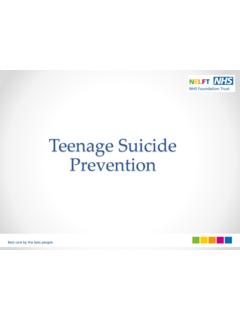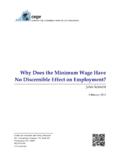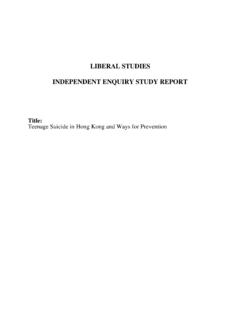Transcription of Lives Cut Short - Every Last Child
1 Lives CUT SHORTRate of Child deaths due toundernutrition in the Philippines now higher than global THE CHILDREN | Lives CUT Short | NOVEMBER 2017 Lives CUT SHORTThis is an executive summary report showing results of the study commissioned by Save the Children Philippines, in collaboration with the Food and Nutrition Research Institute (DOST-FNRI). The Philippines has seen a steady decrease in the under-five Child mortality in the past decades. From a Child mortality rate of 42 per 1,000 live births in 1998, it is now down to 27 per 1,000 live births in 2015.
2 This means that 27 out of 1,000 Filipino children die before reaching the age of 5 slow but steady progress. With scant primary and domestic evidence on the relationship of undernutrition with Child mortality in the Philippines, health and nutrition professionals, government agencies and civil society organizations have relied on international averages to develop nutrition policies, identify intervention and allocate budgets. This research is the first Philippines-specific analysis of national hunger and undernutrition as an underlying determinant to Filipino Child mortality, and to provide recommendations on strategies and interventions that can further improve Child survival nationally.
3 The study included 11,554 children from 8,857 mothers and 8,510 households. This study used data from the 2015 Updating Survey ofNutritional Status of Filipino Children and Other Population groups, which includes data on Child mortality, household food security (includes food availability, accessibility, utilization and stability), meal frequency and diet diversity, maternal health factors, Child nutritional status, feeding practices, illness status, and, socio-demographic characteristics. The said survey is conducted Every 2 to 3 years after a National Nutrition Survey by the DOST-FNRI, which collectsinformation on the nutrition situation across the Philippines.
4 The study estimated the number of deaths attributable to undernutrition; determined the association of undernutrition with household food security and diet diversity; Child feeding practices, Child illness and achievement ofminimum diet diversity and meal frequency among children; and compared the childmortality risk between food secure and food insecure households and across selectedmaternal factors. Mark Anthony, 1 year and 8 months old, gets his mid-upper arm circumference measured by health workers as part of the assessment of his nutritional status during a CMAM program activity in THE CHILDREN | Lives CUT Short | NOVEMBER 2017 The investigation into the link of hunger and undernutrition to Child mortality in thePhilippines revealed the following significant results: a) In 2015, 48% of total Child deaths in the Philippines are attributable to underweight, an indicator of Child undernutrition.
5 This rate is higher than in 2013 and that of the global average (45%). According to the WHO, about 45% of Child deaths in the world are linked to nutrition-related The Lancet 2013 Maternal and Child Nutrition Series, also states that undernutrition, including fetal growth restriction, suboptimum breastfeeding, stunting, wasting, and deficiencies of vitamin A and zinc, cause 45% of Child Studies have shown that Child undernutrition significantly increases the risk of deaths in children. The effect of childhood diseases,insufficient diet, household food insecurity, maternal factor and socio-demographic factors all contribute to this.
6 Malnutrition is identified as an underlying cause that is associated with childhood illnesses -- diarrhea, pneumonia, malaria and measles that lead to Child , with 31,813 of the 65,613 Child deaths in the Philippines in 2015 being linked to underweight status, we can calculate that the rate of Child deaths due to undernutrition in the Philippines is at 48%, higher than global ) Household food insecurity or hunger is a strong predictor of underweight status in children. Children from urban areas below 6 months of age living in moderately and severely food insecure households are 4 times more likely to be underweight than children from food secure households.
7 This means that mothers or children may have skipped meals or experienced extreme ) Insufficient number of meals per day is associated with stunting. Children 6 to 23 months living in rural areas and are not able to achieve the minimum meal frequency are twice as likely to be to the Minimum Meal Frequency Standards, the number of minimum meal frequency depends on age and breastfeeding status of the Child . For breastfed infants 6-8 months old, 2 meals or more are needed while 3 or more meals are required for breastfed children 9-23 months old.
8 For non-breastfed children 6-23 months old, 4 meals at theminimum are ) Severe household food insecurity is significantly associated with childmortality among children 6-59 months living in rural areas , with children from these households being nearly 3 times at higher risk of ) Maternal health factors weresignificantly linked to Child Lancet Maternal and Nutrition Series 2013 emphasizes the importance of the nutritional status of mothers during conception andpregnancy as it ensures proper fetal growth and development. The study cited that intrauterine growth restriction (IUGR), also a form ofundernutrition, causes more than a quarter of all newborn deaths each year following are the maternal factors that were significantly associated with Child mortality (by category): For deaths among children less than 6 months living in rural areas.
9 Preterm birth, maternal age below 20 years and between 40-49 years, 2-3 pregnancies in the past, previous Child deaths, and less than 2 years birth interval For deaths among children less than 6 months living in urban areas: preterm birth, maternal age below 20 years and 4 or more pregnancies in the past For deaths among children 6-59 months living in rural and urban areas: preterm birthMothers who delivered preterm babies are almost 5 times at risk of having Child deaths than their counterparts. Some of the causes of preterm labor are maternal health conditions and nutrition status, infections, multiple and teenage pregnancies.
10 Measures to address these problems should therefore be focused on women in the reproductive age. Quality pre-pregnancy programs (such as adolescent sexual andreproductive health) and antenatal care are among the key interventions in preventingnewborn deaths due to complications ofprematurity, including stillborn. KEY FINDINGSDEATHS IN PH48% OF CHILDThis rate is higher thanglobal average of 45%LINKED TOUNDERNUTRITIONThe investigation into the link of hunger and undernutrition to Child mortality in thePhilippines revealed the following significant results: a) In 2015, 48% of total Child deaths in the Philippines are attributable to underweight, an indicator of Child undernutrition.








